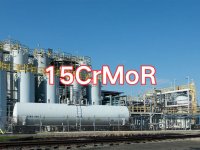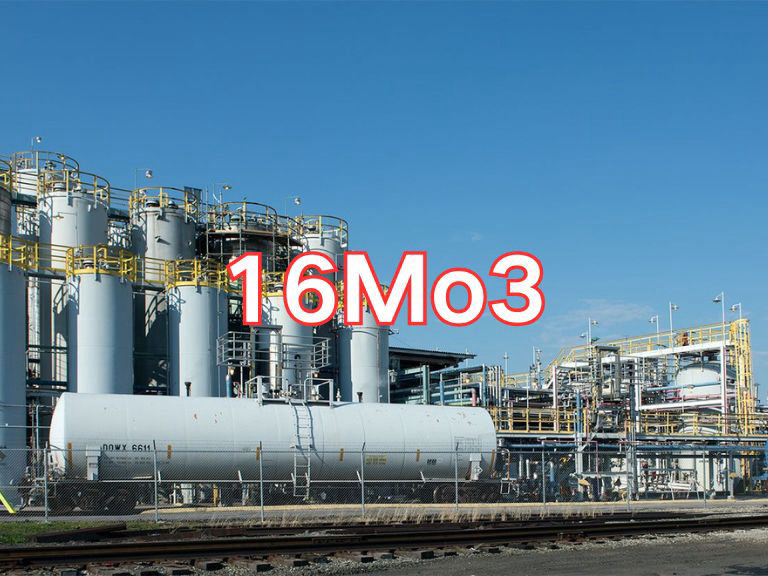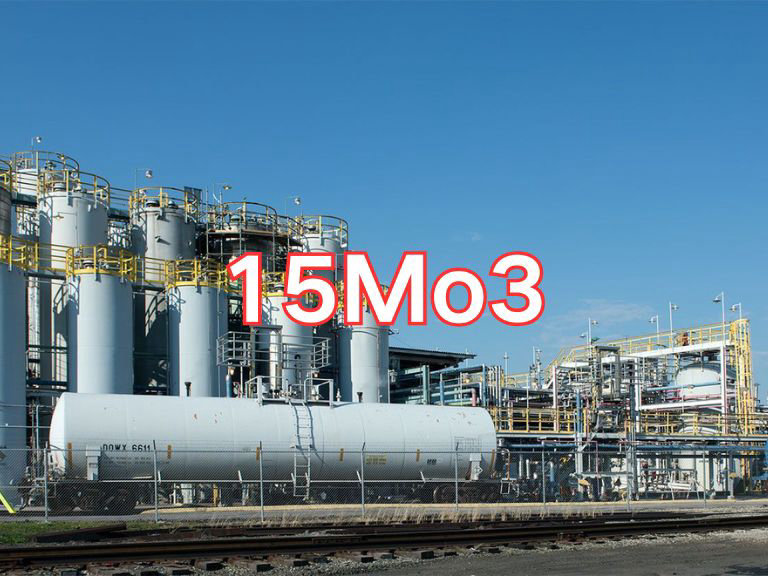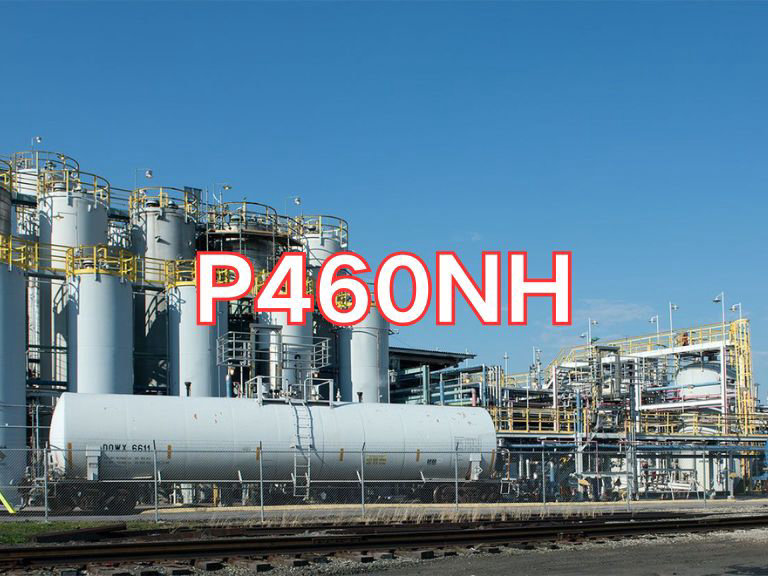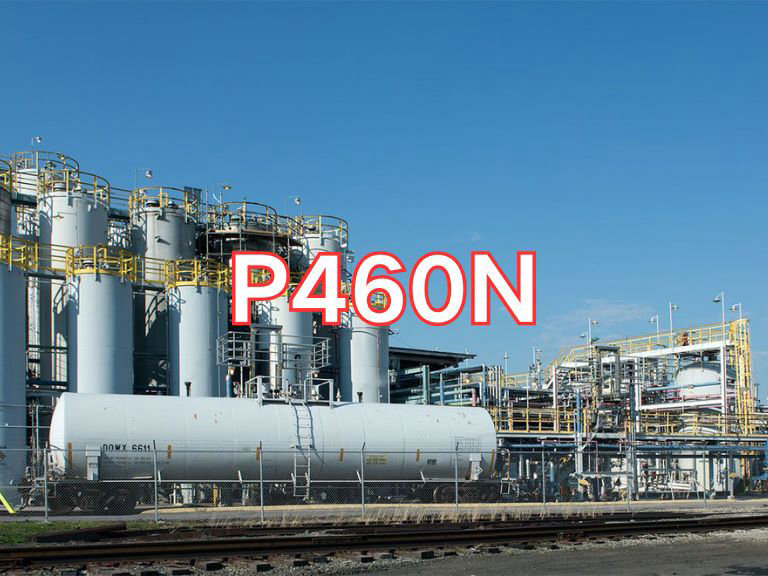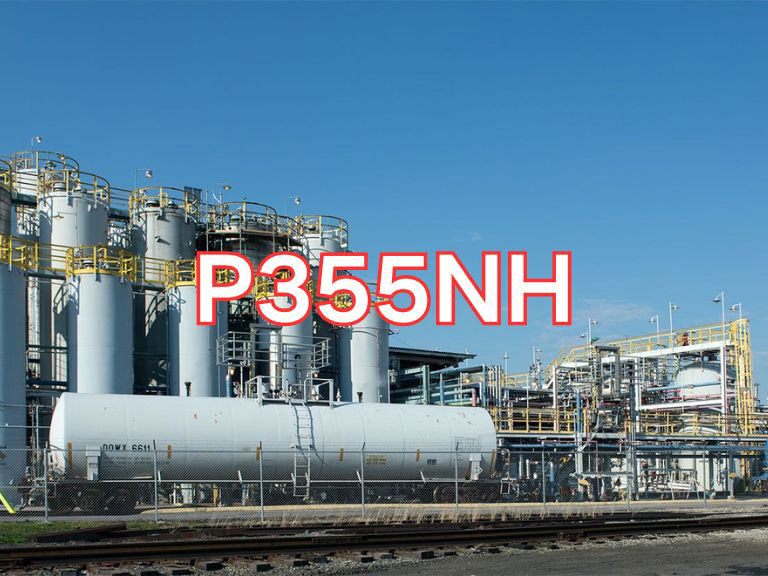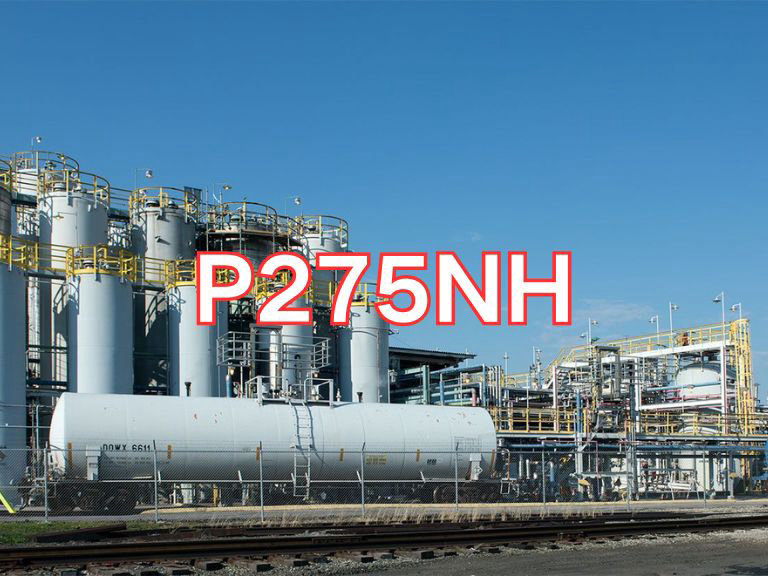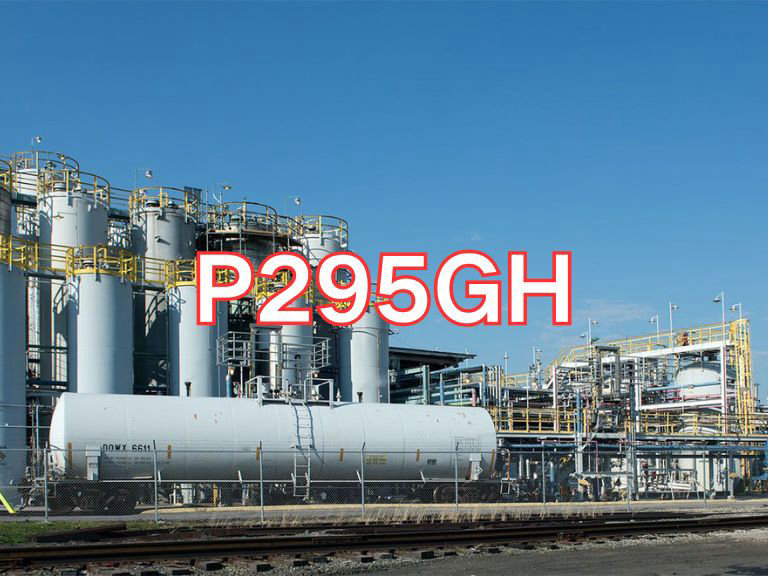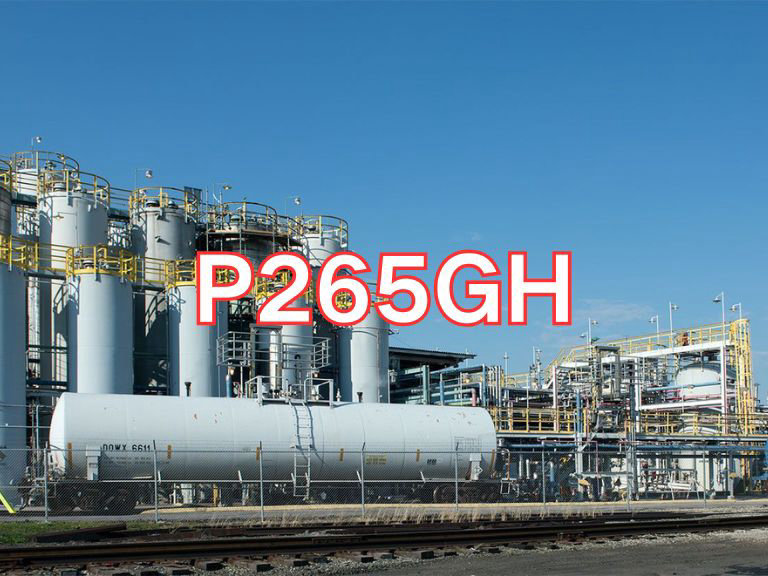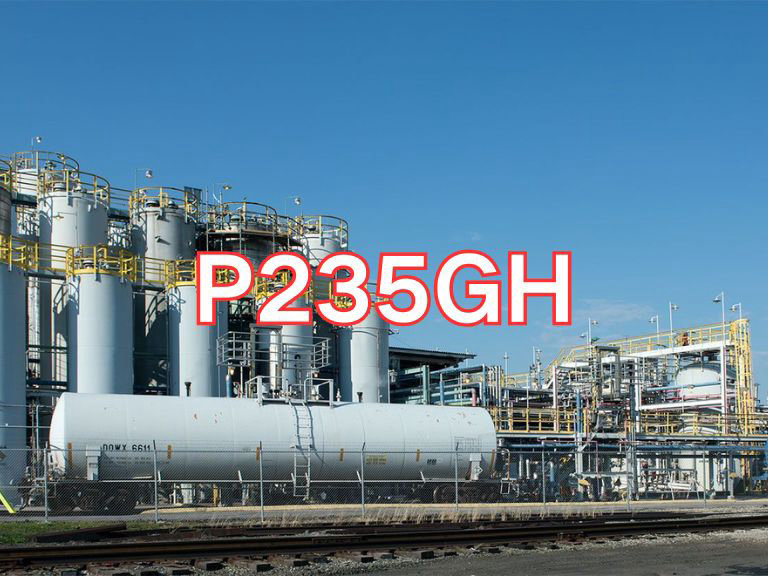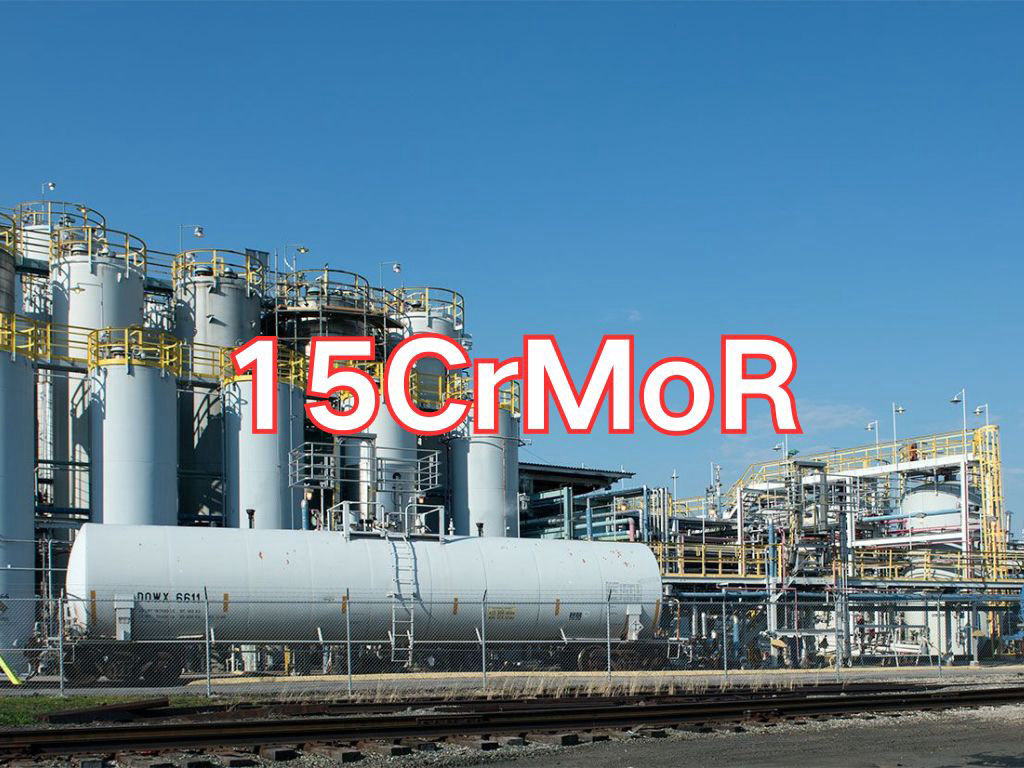

15CrMoR
1. Brief Introduction
15CrMoR is a medium-temperature hydrogen-resistant steel plate, classified as a high-strength low-alloy steel for pressure vessels. Its alloying elements, chromium (Cr) and molybdenum (Mo), provide good comprehensive mechanical properties, excellent high-temperature strength, and superior resistance to hydrogen corrosion. It is widely used in manufacturing critical equipment for industries like petrochemicals and coal conversion.
2. Grade Designation Explanation
The grade "15CrMoR" is defined according to the Chinese National Standard GB 713 (now superseded by GB/T 713.2):
15: Represents the ten-thousandths of the carbon content, i.e., an average carbon content of approximately 0.15%.
Cr: Represents the metallic element "Chromium".
Mo: Represents the metallic element "Molybdenum".
R: The first letter of the Chinese word "Rong" , meaning "vessel".
3. Physical Properties
Density: Approximately 7.85 g/cm³.
Melting Point: Approximately 1420-1460 °C.
Elastic Modulus (20°C): Approximately 210 GPa.
Thermal Conductivity: Relatively low, with specific values varying with temperature.
Coefficient of Thermal Expansion: Similar to carbon steel, but specific values require consultation of reference manuals for corresponding temperatures.
4. Chemical Composition
Per GB/T 713.2-2023 standard, wt%, as the following:
- C ( Carbon ): ≤0.18
- Si ( Silicon ): 0.15-0.40
- Mn ( Manganese ): 0.40-0.70
- Cr ( Chromium ): 0.80-1.20
- Mo ( Molybdemum ): 0.45-0.60
The chemical composition is designed to ensure microstructural stability and resistance to Hydrogen Attack (HTHA) under high-temperature and high-pressure hydrogen environments through the solid solution strengthening and carbide formation of Cr and Mo.
5. Application Fields
15CrMoR is primarily used to manufacture pressure vessels that withstand elevated temperatures and media corrosion. Typical applications include:
- Petroleum Refining: Hydrogenation reactors, hydrodesulfurization unit equipment (e.g., reactor shells R101, R102), methanation reactors, heat exchangers, separators.
- Coal Chemical Industry: Coal locks, ash locks, shift converters in coal gasification units.
- Chemical Industry: High-pressure equipment in processes like synthetic ammonia and methanol synthesis.
- Power Plants: High-pressure boiler drums (though less common, with materials like WB36 being used more frequently for this application).
6. Testing & Production Methods
Production Method: Typically produced via electric arc or basic oxygen furnace melting, followed by secondary refining (e.g., LF furnace, VD/VOD vacuum treatment) and continuous casting to ensure high purity and a uniform microstructure. Rolling often employs Thermo-Mechanical Controlled Processing (TMCP) or Normalizing + Tempering (N+T) processes.
Testing Requirements: Must undergo strict mechanical and technological property tests before delivery, including but not limited to:
- Mechanical Properties: Room temperature tensile test (measuring ReL, Rm, A), Charpy V-notch impact test (at room temperature and/or low temperature).
- High-Temperature Properties: Elevated temperature yield strength (Rp0.2) test.
- Non-Destructive Testing: Ultrasonic Testing (UT).
- Bend Test: To check the bending plasticity of the plate.
- Hardness Test.
7. Corresponding or Similar International Grades
U.S. Standard (ASTM/ASME):
SA-387 Gr.12 CL 2: This is the most directly equivalent grade, with very similar chemical composition and mechanical property requirements.
European Standard (EN):
13CrMo4-5 (EN 10028-2): The chemical composition (particularly Cr, Mo content) and properties are similar to 15CrMoR, making it a common equivalent material.
Japanese Standard (JIS):
SCMV 2 (JIS G 3115): A Cr-Mo steel plate for pressure vessels, with a grade similar to 15CrMoR and SA387 Gr.12.
Note: Although these grades are similar, there might be slight differences in specific chemical composition limits, heat treatment requirements, and mechanical property indices. For actual material selection and substitution, it is essential to strictly compare the design specifications and standards of the specific project and obtain approval from the design authority.

Ultrasonic Testing (UT)
A key non-destructive testing technique that uses high-frequency sound waves to detect internal flaws in steel plates. The probe emits sound waves, which reflect when encountering defects such as cracks or inclusions. The receiver captures the echoes, enabling precise determination of defect location and size. With high sensitivity, strong penetration, and fast inspection speed, UT effectively ensures internal quality, widely used in the production of heavy plates, pressure vessel plates, and other high-end products to guarantee safety and reliability.

Magnetic Particle Testing (MT)
A common surface inspection method that magnetizes the workpiece, causing leakage magnetic fields at surface or near-surface defects like cracks or inclusions, which attract magnetic particles to form visible indications. Simple to operate and highly sensitive, MT is suitable for rapid inspection of surface and near-surface flaws in ferromagnetic materials, widely used for online or offline inspection of plate edges, ends, and welds, ensuring product quality and safety.

Penetrant Testing (PT)
A non-destructive method for detecting surface-breaking flaws. A penetrant liquid is applied to the cleaned steel surface, allowing it to seep into defects such as cracks or pores. After removing excess penetrant, a developer is applied, causing the trapped penetrant to bleed out and form visible indications. Simple and cost-effective, PT is suitable for inspecting surface defects in various non-porous materials, commonly used for welds, castings, and complex components, effectively ensuring surface quality of steel plates.

